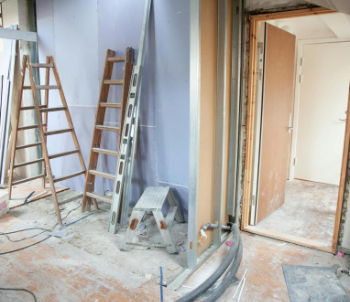Defective premises - liability and measure of damages
The case of Harrison & Others v Shepherd Homes Ltd (2011) EWHC 1811 (TCC) relates to the correct approach to the measurement of damages for defective premises.
Contents |
[edit] Summary Background
The Claimants were owners of houses on an estate in Hartlepool which were built by Shepherd Homes Ltd. The houses were built over a period of years up to 2004. The site was a former landfill site and so the properties were constructed on piled foundations. These piled foundations had been negligently designed and constructed with the result that the properties showed varying degrees of damage. Some of the properties suffered only minimal damage but had, nonetheless, proved virtually impossible to sell or re-mortgage.
A trial of 10 sample cases took place in 2010. Those claimants who were original purchasers of their properties relied upon their original contracts of sale, whilst all claimants relied on the provisions of the Defective Premises Act 1972 and the NHBC Buildmark guarantee. Shepherd Homes Ltd denied liability arguing that it owed the claimants no obligations under the original contracts of sale, that breach of duty under the Defective Premises Act required unfitness for habitation, which did not apply here, and that the required written notice under the NHBC Buildmark scheme had not been provided.
[edit] The Judgment
Giving judgment, Ramsey J held that the foundations were defective and that Shepherd Homes Ltd was responsible for the defects as a consequence of its breach of both express and implied terms of the contracts of sale. On a proper construction of the sale contracts, Shepherd Homes was obliged to carry out the design with proper skill and attention and ensure that the houses were fit for habitation.
Alternatively, such a term would be implied. Furthermore, if the sale contracts were to be interpreted as argued by Shepherd Homes then they would be unfair within the meaning of the Unfair Terms in Consumer Contracts Regulations 1999 and the Unfair Contract Terms Act 1977.
As to the provisions of the Defective Premises Act, it was held that there existed a single duty to ensure that the houses were fit for habitation when completed (Alexander v Mercouris (1979) 1 WLR 1270). The defective piles meant that the houses were unfit for habitation notwithstanding the minimal physical damage.
And with regard to the NHBC Buildmark scheme the problems of the estate generally meant that Shepherd Homes had had constructive notice of these problems and they therefore could not rely upon an absence of notice to avoid liability under this scheme.
[edit] Damages
[edit] Reinstatement
- There will generally be an award of the cost of reinstatement provided that reinstatement is reasonable.
- Reinstatement will be unreasonable if it is out of all proportion to the benefit to be obtained.
- Reasonableness has to be determined on a case by case basis.
- It is not necessary for recovery of the cost of reinstatement to show that the claimant will reinstate the property, but the intention to reinstate may be relevant to the question of reasonableness.
[edit] Diminution in value
If reinstatement is unreasonable, the measure of damages will generally be diminution in value.
[edit] Loss of amenity
Where reinstatement is unreasonable and there is no diminution in value then modest damages may be awarded for loss of amenity.
The following considerations would be applied:
- There is a general rule, that a claimant cannot recover damages for injured feelings arising from a breach of contract. There is an exception where the object of the contract is to afford pleasure, relaxation or peace of mind.
- Damages may be recovered for physical inconvenience or discomfort and mental suffering associated therewith.
This judgment will be viewed as unhelpful to construction professionals and their insurers as it raises the distinct prospect that the value of defective premises claims will rise in the future with a consequent increase in costs for insurers and premiums for professional indemnity insurance cover.
[edit] Related articles on Designing Buildings Wiki
- Buildmark.
- Calculating compensation for property damage.
- Defects.
- Defective Premises Act.
- Defective premises and freeholder liabilities.
- Defects liability period.
- Design liability.
- Latent defects.
- Housing Defects Act 1984.
- NHBC.
- Premises.
- Professional indemnity insurance.
- Professional Indemnity Insurance clause in conditions of engagement.
- Schedule of defects.
- Vendor survey.
Featured articles and news
Considerate Constructors Scheme acquires Building A Safer Future
Acquisition defines a new era for safety in construction.
AT Awards evening 2024; the winners and finalists
Recognising professionals with outstanding achievements.
Reactions to the Autumn Budget announcement
And key elements of the quoted budget to rebuild Britain.
Chancellor of the Exchequer delivers Budget
Repairing, fixing, rebuilding, protecting and strengthening.
Expectation management in building design
Interest, management, occupant satisfaction and the performance gap.
Connecting conservation research and practice with IHBC
State of the art heritage research & practice and guidance.
Innovative Silica Safety Toolkit
Receives funding boost in memory of construction visionary.
Gentle density and the current context of planning changes
How should designers deliver it now as it appears in NPPF.
Sustainable Futures. Redefining Retrofit for Net Zero Living
More speakers confirmed for BSRIA Briefing 2024.
Making the most of urban land: Brownfield Passports
Policy paper in brief with industry responses welcomed.
The boundaries and networks of the Magonsæte.
London Build Fire and Security Expo
20-21 Nov and now with new Ambassador Programme..
The Scottish Building Safety Levy
Eight weeks of consultation closing on 18 November.
The grey, the brown and the golden rules of housing
shifting policies from the wild west of housing development.
Future proofing homes that are fit for purpose
Specification challenges and the role of plastic.
Thousands of new homes unlocked for brownfield sites
£68 million to 54 councils for neglected land into new homes.























